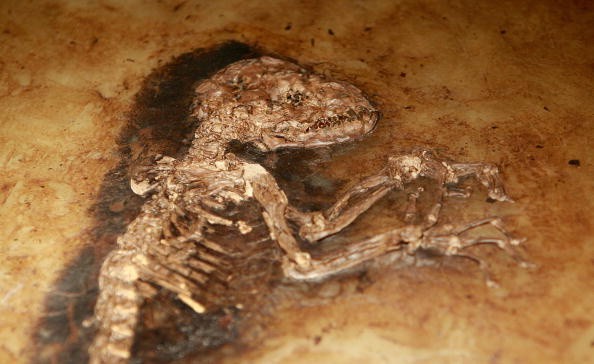Around 30 million years ago, as Earth's temperature changed from marshy to cold, that proportion of animal species perished from Africa and the Arabian Peninsula. Sixty-three percent, to be exact. However, we are only now learning about it.

A new study released this week in the journal Communications Biology summarizes decades of research into a previously unknown extinction event that occurred at the transition between the Eocene and Oligocene geological eras.
Extreme Climate Change

Climate change was extreme during that time period. The Earth got cooler, ice sheets extended, sea levels dropped, forests began to change to grasslands, and carbon dioxide became scarce, in a reversal of what is happening today. As a result, almost two-thirds of the species that existed in Europe and Asia became extinct.
It was assumed that African animals may have survived unharmed. In addition, Africa's temperate environment and closeness to the Equator may have protected it from the worst cooling trend during that time period.
Researchers have now demonstrated that, despite their comparatively mild climate, African animals were just as impacted as those from Europe and Asia due in large part to a huge collection of fossils held at the Duke Lemur Center Division of Fossil Primates (DLCDFP). Elwyn Simons of Duke spent decades scouring Egyptian deserts collecting fossils, and the collection was his life's work.
Examining Fossils
The scientists examined fossils from five animal families, including the United States, England, and Egypt. Hyaenodonts, an extinct carnivore group; anomalures (scaly-tail squirrels) and hystricognaths (a rodent group that includes porcupines and naked mole rats); and strepsirrhines (lemurs and lorises), as well as our predecessors, the anthropoids (apes and monkeys).
The team created evolutionary trees for these groupings using data from hundreds of fossils from different locations across Africa, determining when new lineages branched out and time-stamping each species' first and last known appearances.
Their findings reveal that around the Eocene-Oligocene border, all five mammal families sustained significant losses.
Dorien de Vries, a postdoctoral researcher at the University of Salford and the paper's main author, stated, "It was a genuine reset button."
Fossil Patterns
After a few million years, similar groupings reappear in the fossil record but with a different appearance. The fossil species that reappeared later in the Oligocene, following the mass extinction, are not the same as those previously discovered.
"It's quite apparent that there was a massive extinction catastrophe, followed by a recovery phase," said Steven Heritage, co-author of the research and Researcher and Digital Preparator at Duke University's DLCDFP.
The proof is in the teeth of these creatures. Molar teeth reveal a lot about a mammal's diet, which shows a lot about its surroundings.
After a few million years, rodents and primates emerged with different teeth. These were new species that ate various foods and lived in distinct environments.
"We find a tremendous loss in tooth variety, followed by a period of recovery with novel dental forms and adaptations," de Vries explained.
"Extinction is intriguing in that manner," said Matt Borths, writer of the research and curator of Duke University's DLCDFP. "It kills everything, but it also creates new ecological chances for the lineages that survive in this new world," says the author.
The Eocene-Oligocene border was an evolutionary bottleneck, with most lineages becoming extinct and only a few surviving. These surviving lineages diversified during the following several million years.
"Diversity in our anthropoid ancestors dwindles to almost nothing around 30 million years ago, leaving them with a single tooth type," said Erik R. Seiffert, Professor and Chair of the Department of Integrative Anatomical Sciences at the University of Southern California's Keck School of Medicine, a graduate student of Simons and senior co-author of the paper. "What was feasible in terms of later food diversification was determined by that ancestral tooth form."
"There's an intriguing tale about that bottleneck's involvement in our early evolutionary history," Seiffert added. "If our monkey-like ancestors had gone extinct 30 million years ago, we might not have existed at all. But, fortunately, they didn't."
Extinction Threat

The threat of extinction posed by a fast-changing climate wasn't the only issue these few surviving species of animals had to deal with. As the temperature plummeted, East Africa was hit by a slew of big geological phenomena, including volcanic mega eruptions and flood basalts-massive eruptions that blanketed huge swaths of land in molten rock. Simultaneously, the Arabian Peninsula split from East Africa, allowing the Red Sea and the Gulf of Aden to open.
"At the Eocene-Oligocene border, we lost much variety," Borths remarked. "However, the species that survived appear to have had enough of a toolbox to live in this changing climate."
"Climate change has affected the evolutionary tree of life throughout geological time," said Hesham Sallam, co-author of the research and founder of the Mansoura University Vertebrate Paleontology Center in Egypt. "The simplest approach to understanding how climate change will influence natural systems is to collect information from the past."
Also Read : Can Climate Change Drive Humanity to Extinction?
For more environmental news, don't forget to follow Nature World News!
© 2025 NatureWorldNews.com All rights reserved. Do not reproduce without permission.




